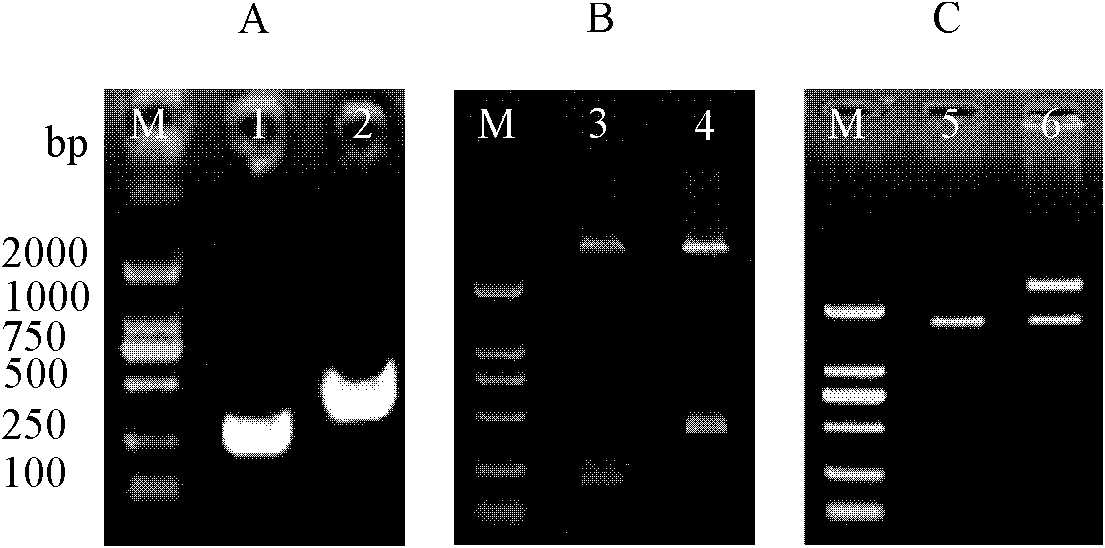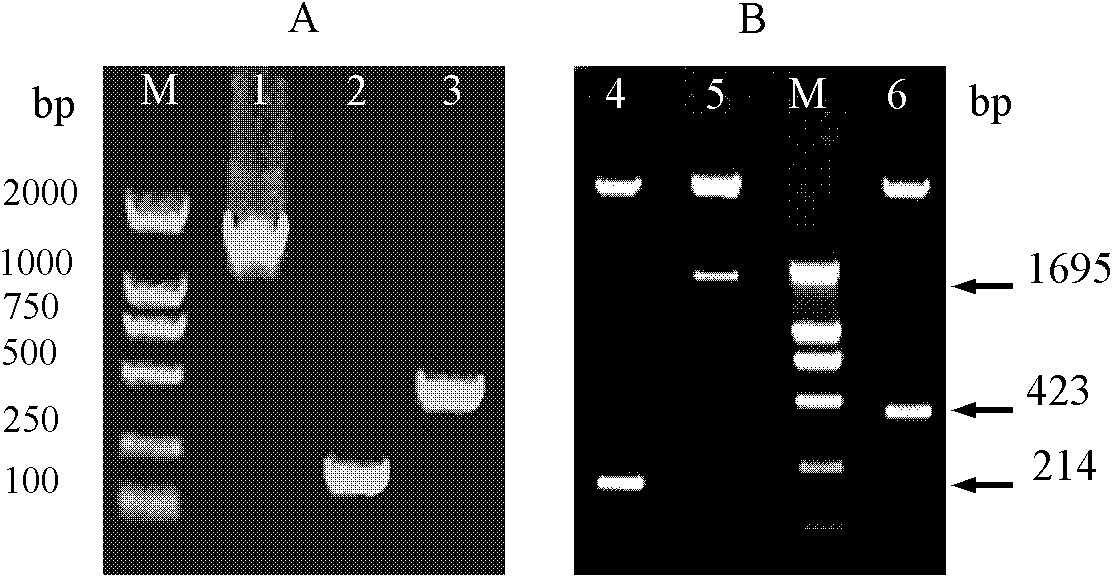Lactobacillus plantarum display linoleic acid isomerase, and preparation method and application thereof
The technology of linoleic acid isomerase and Lactobacillus plantarum is applied in the field of bioengineering, which can solve the problems of low expression efficiency, retention and low catalytic efficiency, and achieves the effect of reducing production cost and improving yield.
- Summary
- Abstract
- Description
- Claims
- Application Information
AI Technical Summary
Problems solved by technology
Method used
Image
Examples
Embodiment 1
[0022] Example 1 Fusion of linoleic acid isomerase gene, signal peptide gene and anchor gene
[0023] Use the primers in Table 1 to amplify the lai gene (Genbank No.: HQ831447) from Lactobacillus plantarum lp15-2-1, amplify the signal peptide gene usp45 (Genbank No.: LACUSP45) from Lactococcus lactis (Lactococcus lactis) and The M6 anchor protein gene m6 (Genbank No: STRM6) was amplified from Streptococcus pyogenes; the PCR product of the gene sequence was connected to the pMD18-T simple (pMDS) vector, and the cloning vector pMDS- lai, pMDS-usp45 and pMDS-m6, and carry out PCR and enzyme digestion identification on the cloning vector, the reaction system and reaction procedure of PCR are as follows:
[0024] PCR reaction system (50μL):
[0025]
[0026] The reaction program was: 94°C for 5min; 94°C for 30s, 48°C for 30s (primers Usp45-5' and Usp45-3') / 50°C for 30s (primers M6-5' and M6-3') / 50°C for 40s (primers LAI -5' and LAI-3'), 72°C for 30s, 30 cycles; 72°C for 5min...
Embodiment 2
[0031] Example 2 Construction of Lactic Acid Bacteria Display Expression Vector
[0032] Lactococcus lactis universal expression plasmid pMG36e is a classic artificially constructed constitutive expression vector, which is constructed based on the transcription and translation signals of a Lactococcus lactis subsp. cremoris protease gene. It contains a strong promoter capable of expressing foreign proteins in a variety of bacteria. In this example, this expression vector was used. First, the plasmid pMDS-usp45 and the empty vector pMG36e were digested with Cla I and Sal I respectively. After electrophoresis detection, the DNA fragment usp45 and the vector pMG36e were recovered and ligated, and the ligated product was transformed into Escherichia coli DH5α Competent cells were screened on LB medium containing erythromycin to obtain the plasmid pMG36e-usp45 (pMU); then the plasmids pMDS-lai and pMU were subjected to Sal I and Pst I double enzyme digestion, respectively, after el...
Embodiment 3
[0038] Example 3 Display and expression of linoleic acid isomerase on the cell surface of Lactobacillus plantarum
[0039]The lactic acid bacteria display expression vector pMG36e-usp45-lai-m6 was transformed into Lactobacillus plantarum CGMCC NO.3782 cells by electroporation method, and the transformants were screened on the MRS plate containing erythromycin, and further obtained by using primers M6-5' and M6 -3' for PCR verification, the PCR reaction system and reaction procedures are as follows:
[0040] PCR reaction system (50μL):
[0041]
[0042] The reaction program was: 94°C for 5min; 94°C for 30s, 48°C for 30s (primers Usp45-5' and Usp45-3') / 50°C for 30s (primers M6-5' and M6-3') / 50°C for 40s (primers LAI -5' and LAI-3'), 72°C for 30s, 30 cycles; 72°C for 5min.
[0043] The result is as Figure 4 As shown, compared with the control negative bacterial strain, the Lactobacillus plantarum engineered strains can all amplify a band of about 500bp, indicating that the...
PUM
 Login to View More
Login to View More Abstract
Description
Claims
Application Information
 Login to View More
Login to View More - R&D Engineer
- R&D Manager
- IP Professional
- Industry Leading Data Capabilities
- Powerful AI technology
- Patent DNA Extraction
Browse by: Latest US Patents, China's latest patents, Technical Efficacy Thesaurus, Application Domain, Technology Topic, Popular Technical Reports.
© 2024 PatSnap. All rights reserved.Legal|Privacy policy|Modern Slavery Act Transparency Statement|Sitemap|About US| Contact US: help@patsnap.com










